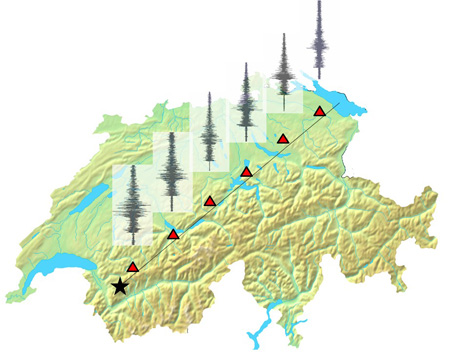Appuyez sur la touche de tabulation pour activer le mode lecteur d'écran.
Le contenu de la page commence ici
Ground Motion Prediction Equations (GMPEs)
- Hallo, M., Bergamo, P., and Fäh, D. (2022). Stochastic model to characterize high-frequency ground motion at depth validated by KiK-net vertical array data. Bulletin of the Seismological Society of America (under review).
- Bard, P.-Y., Bora, S. S., Hollender, F., Laurendeau, A., and Traversa, P. (2020). Are the standard VS-Kappa host-to-harget adjustments the only way to get consistent hard-rock ground motion prediction?. Pure and Applied Geophysics 177, 2049–2068. doi: 10.1007/s00024-019-02173-9
- Edwards, B., and Fäh, D. (2017). Prediction of earthquake ground motion at rock sites in Japan: evaluation of empirical and stochastic approaches for the PEGASOS Refinement Project. Geophysical Journal International 211(2), 766-783. doi: 10.1093/gji/ggx328
- Pilz, M., and Fäh, D. (2017). The contribution of scattering to near-surface attenuation. Journal of Seismology 21 (4), 837–855. doi: 10.1007/s10950-017-9638-4
- Edwards, B., Cauzzi, C., Danciu, L., and Fäh, D. (2016). Region-specific assessment, adjustment, and weighting of ground-motion prediction models: Application to the 2015 Swiss seismic-hazard maps. Bulletin of the Seismological Society of America 106 (4), 1840-1857. doi: 10.1785/0120150367
- Edwards, B., Ktenidou, O.-J., Cotton, F., Abrahamson, N., Van Houtte, C. and Fäh, D. (2015). Epistemic uncertainty and limitations of the Kappa0 model for near-surface attenuation at hard rock sites. Geophysical Journal International 202 (3), 1627-1645. doi: 10.1093/gji/ggv222
- Edwards, B. & Fäh, D. (2014). Ground motion prediction equations. Link doi: 10.3929/ethz-a-010232326
- Edwards, B. and Fäh D. (2013). A Stochastic Ground‐Motion Model for Switzerland. Bulletin of the Seismological Society of America 103, 78-98. doi: 10.1785/0120110331
- Edwards, B., Michel, C., Poggi, V. and Fäh, D. (2013). Determination of Site Amplification from Regional Seismicity: Application to the Swiss National Seismic Networks. Seism. Res. Lett. 84(4), 611-621. doi: 10.1785/0220120176
- Poggi, V., Edwards, B. and Fäh, D (2013). Reference S-wave velocity profile and attenuation models for ground-motion prediction equations: application to Japan. Bulletin of the Seismological Society of America 103(5), 2645-2656. doi: 10.1785/0120120362
- Poggi, V., Edwards, B. and Fäh, D. (2012). Characterizing the vertical to horizontal ratio of ground-motion at soft sediment sites. Bulletin of the Seismological Society of America 102(6), 2741-2756. doi: 10.1785/0120120039
- Poggi, V., Edwards, B. and Fäh, D. (2011). Derivation of a Reference Shear-Wave Velocity Model from Empirical Site Amplification. Bulletin of the Seismological Society of America 101(1), 258-274. doi: 10.1785/0120100060
